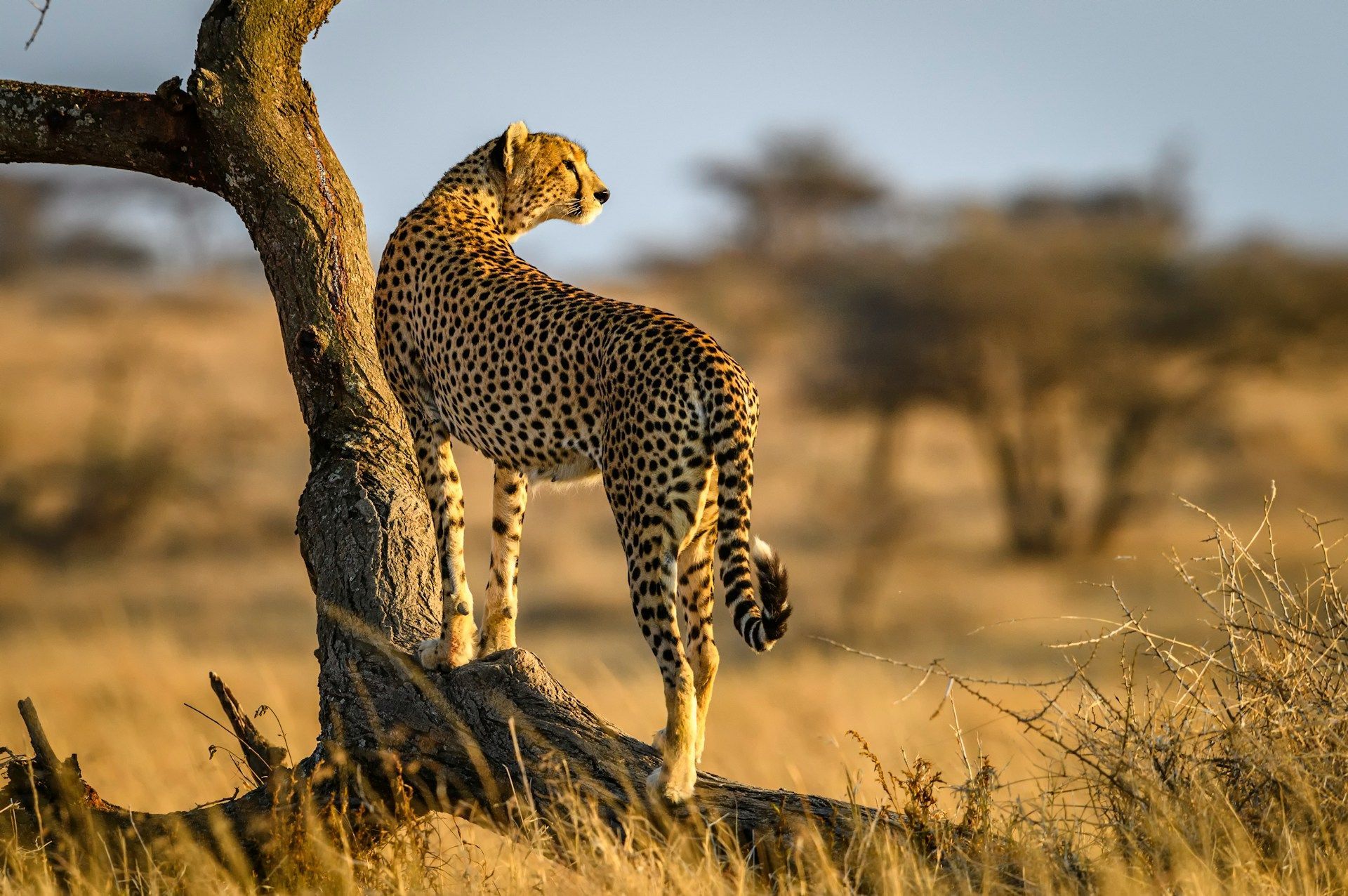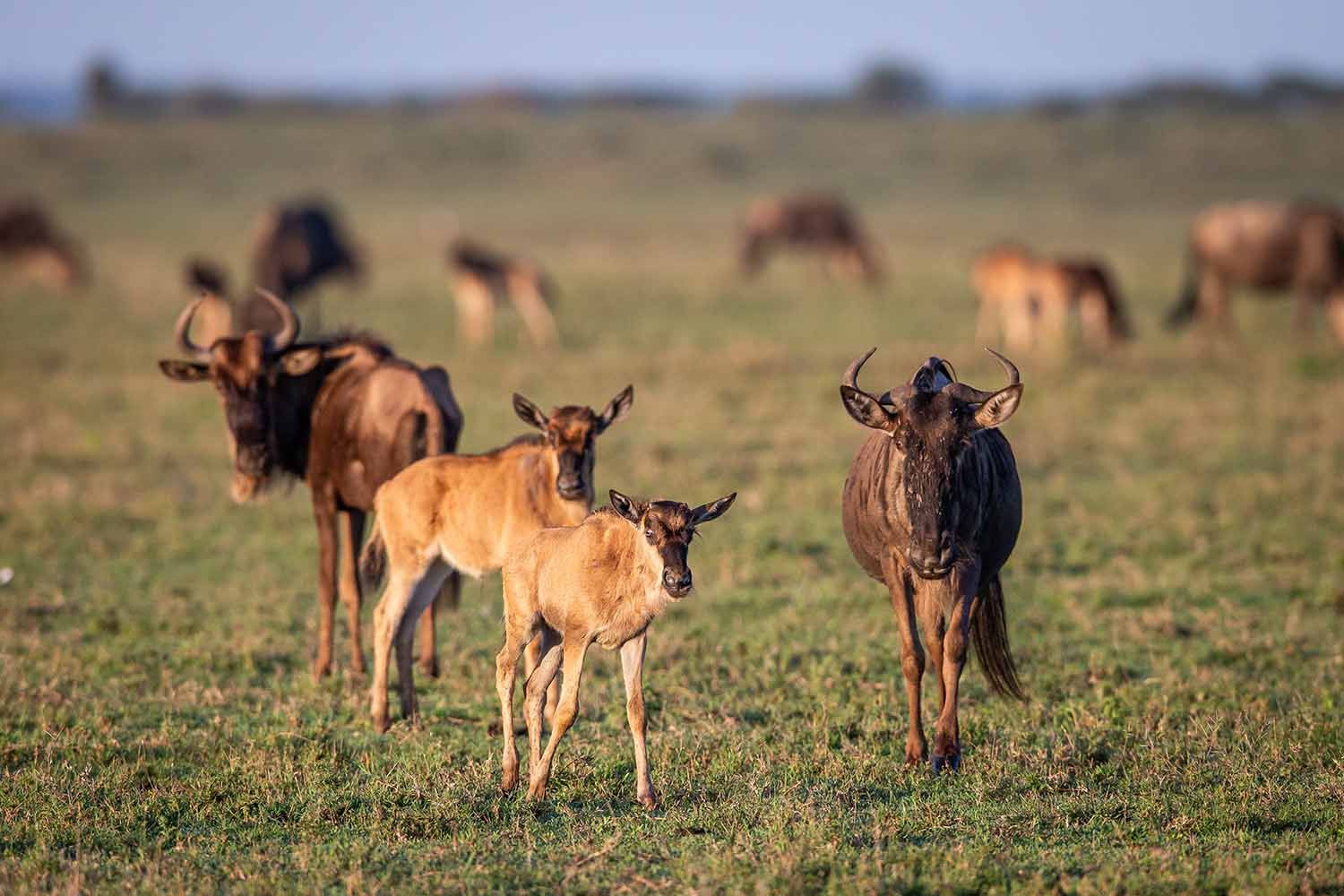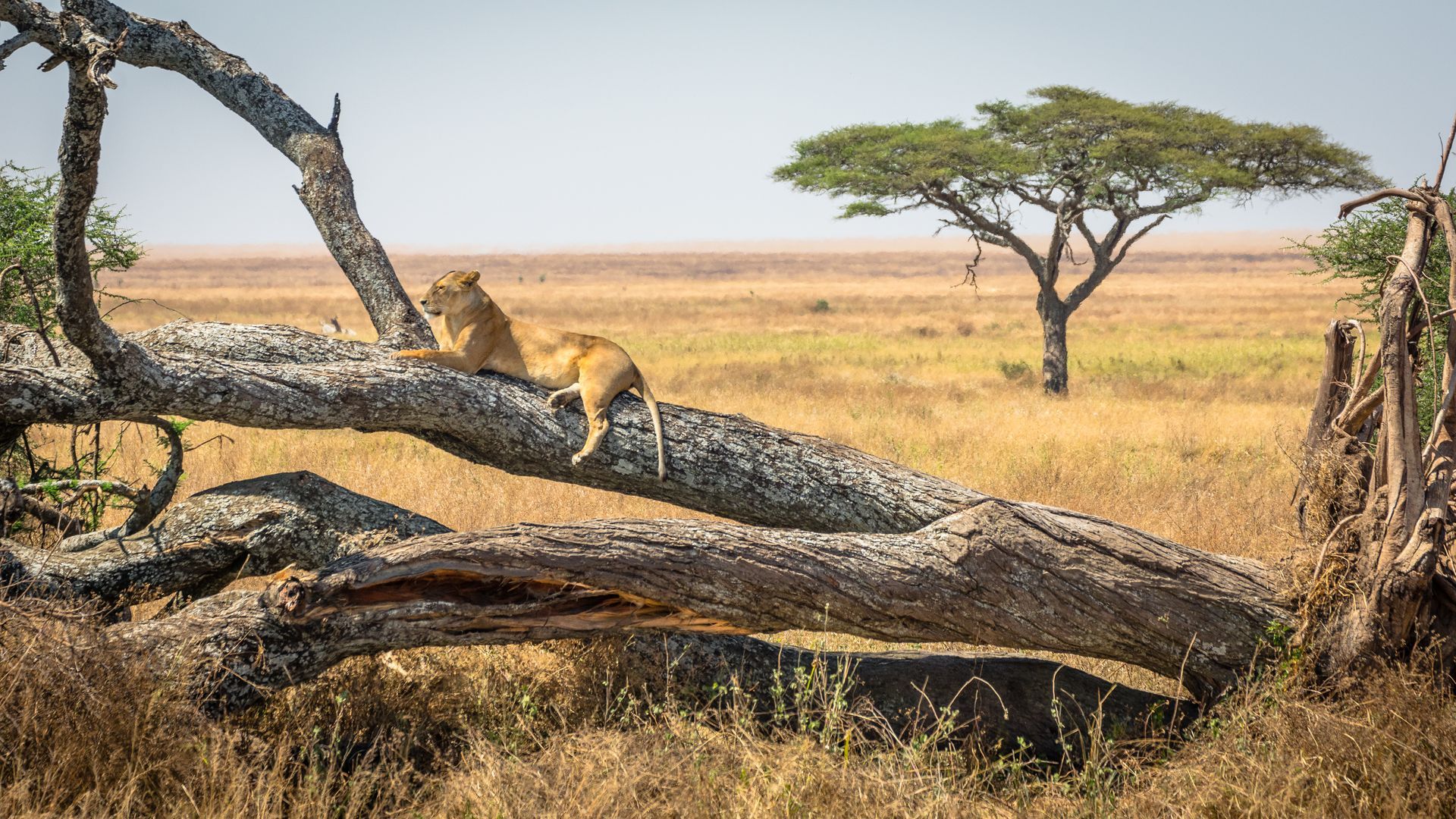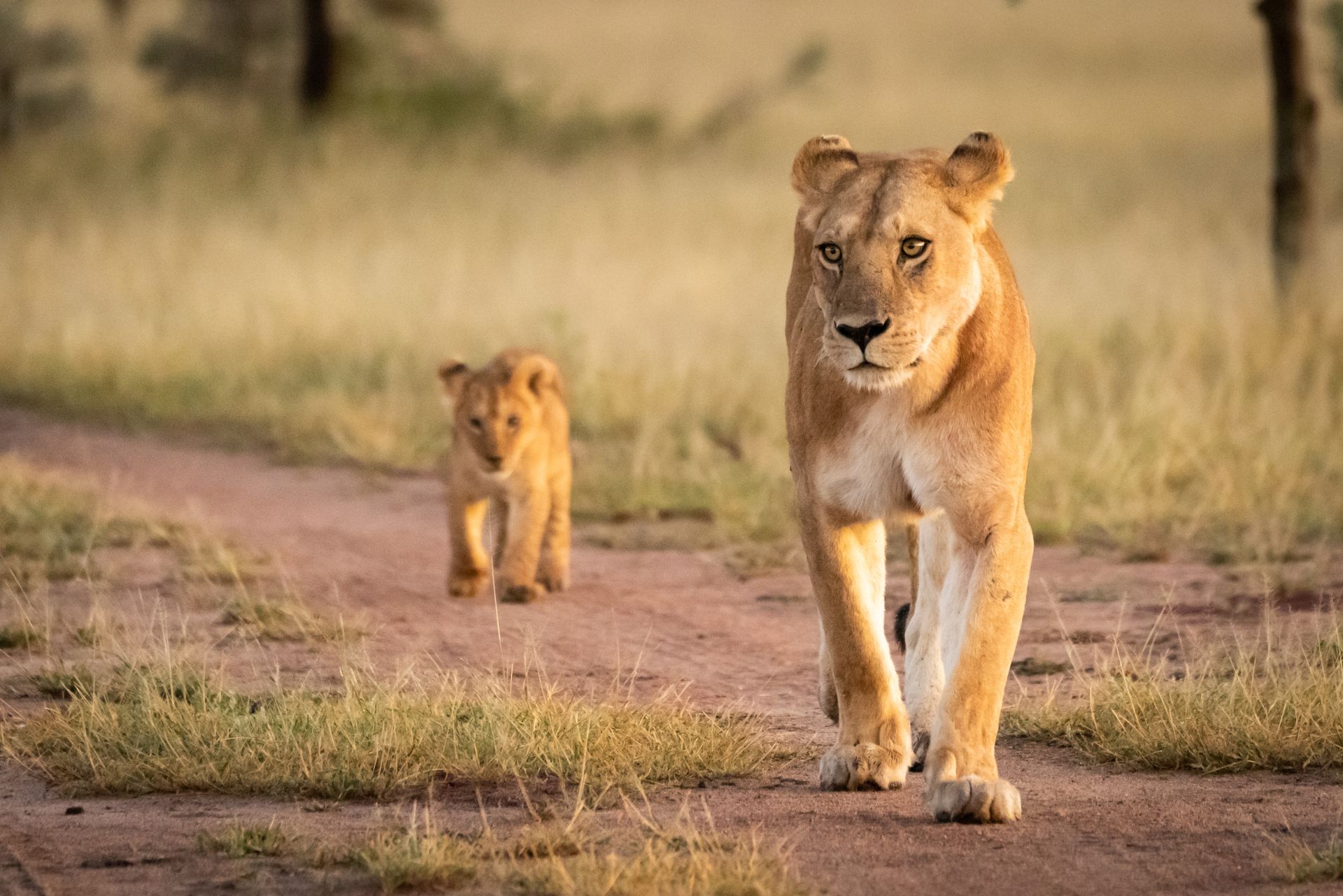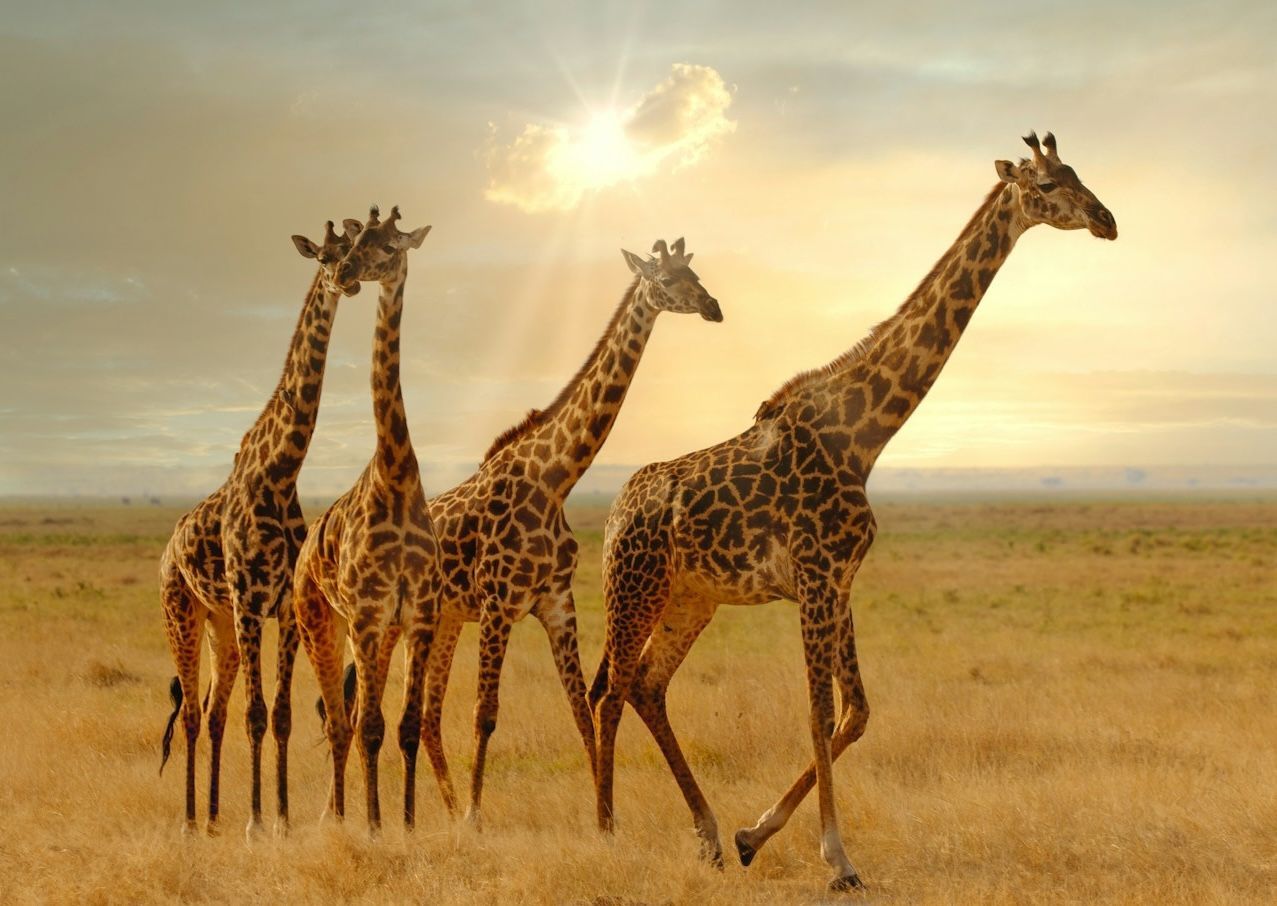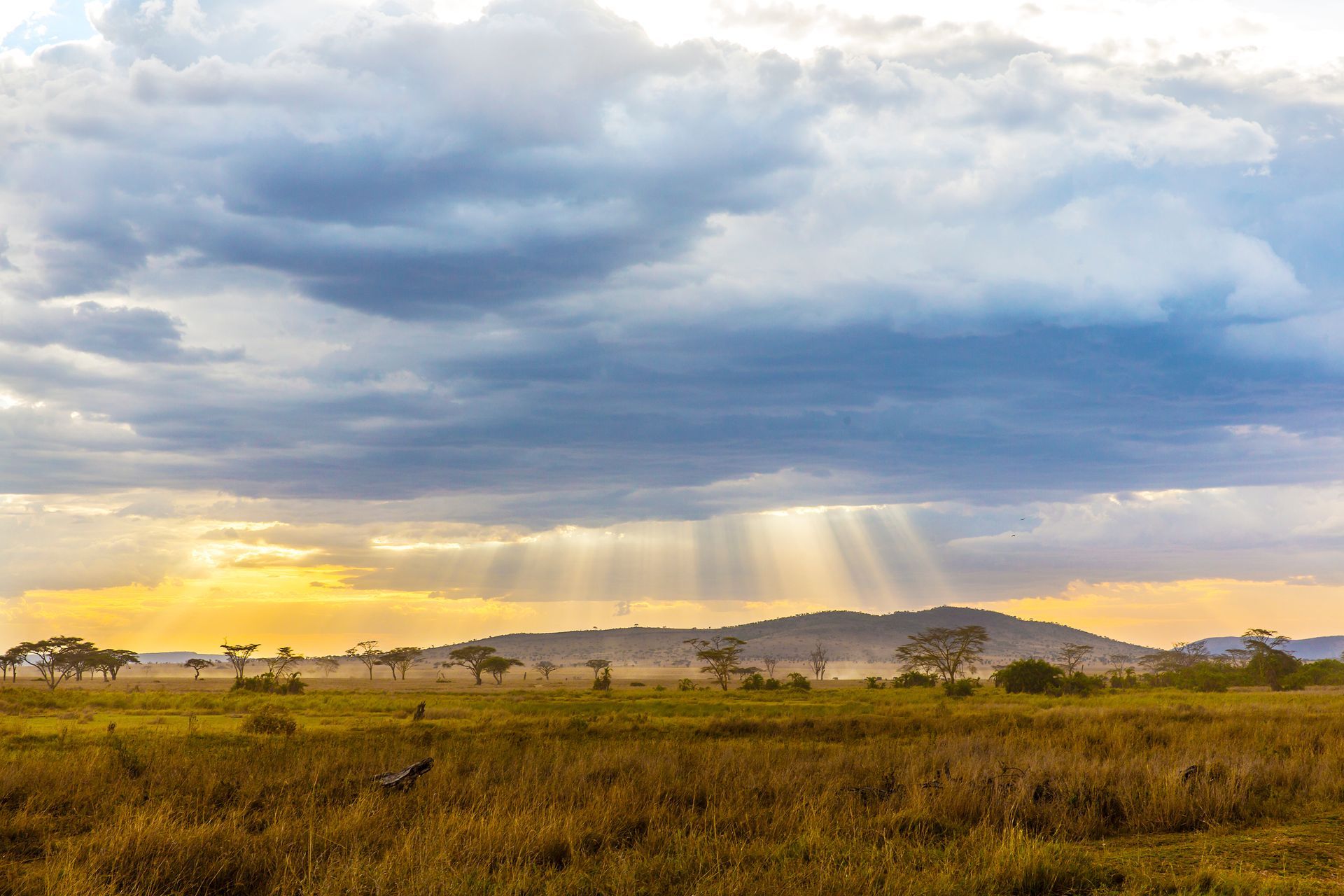SENSATIONAL SERENGETI
Experience the magic of this superlative safari destination
The Serengeti National Park is quite simply legendary. It's the beating heart of Tanzania’s famed northern circuit and offers incredible safari experiences across its vast wilderness and sweeping plains. Renowned for its astonishing wildlife and dramatic landscapes, this iconic national park embodies the magic and majesty of East Africa. For those seeking the quintessential East African safari adventure, the Serengeti’s timeless beauty and conservation legacy is unbeatable.
The name “Serengeti” comes from the Maasai word "siringet", meaning "endless plains" or "the place where the land runs on forever." It's an apt description of a landscape defined by expansive horizons, vast savannahs, and the scattered silhouettes of acacia trees.
Covering approximately 14,750 square kilometres, the park forms the core of the greater Serengeti ecosystem, which stretches beyond Tanzania into Kenya’s famed Masai Mara National Reserve. This interconnected wilderness supports one of the most biodiverse habitats on the continent and stands as a symbol of conservation triumph.
The Serengeti was officially gazetted in 1951 following efforts to protect its remarkable ecosystems from human encroachment. Today, it remains one of Africa’s most significant protected areas and a living testament to the value of conservation. The park’s geology tells a story of ancient volcanic activity, with vast plains formed from ash deposited by eruptions of the now-extinct volcanoes of the Ngorongoro Volcanic Highlands - the same volcanic system that created the Ngorongoro Crater. This fertile soil supports the prolific grasslands that sustain vast herds of herbivores, forming the basis of the park’s complex and dynamic ecosystem.
The Serengeti’s wildlife is as varied as its landscapes. More than 70 large mammal species and some 500 bird species thrive here. The park is perhaps best known for the Great Wildebeest Migration, where more than 1,5-million wildebeest, accompanied by hundreds of thousands of zebra, traverse its plains in a relentless cyclical search for fresh grazing and water. This spectacular journey is fraught with danger, from predatory big cats to perilous river crossings.
Beyond its role as a tourism beacon, The Serengeti remains a cornerstone of conservation efforts in East Africa. Its vast, protected landscapes sustain a delicate ecological balance, providing sanctuary to a variety of species.
Geographically, the Serengeti offers remarkable variety, divided into distinct regions that provide unique landscapes and wildlife experiences. The southern region, including the Ndutu Plains, are the birthplace of the migration. It's here, between December and March each year, that the wildebeest bring the next generation into the world, calving en masse. This region becomes a nursery for newborn calves, attracting predators such as lions, cheetahs, and hyenas in search of easy prey. The wide-open grasslands here provide some of the most photogenic landscapes in the park.
In the central region, around Seronera, permanent water sources make for a year-round wildlife haven. Known for its concentration of predators, including leopards and large lion prides, Seronera offers some of the best game viewing in the park. The iconic kopjes - granite rock formations scattered across the plains - provide shade and vantage points for big cats and other wildlife.
To the north, the landscape transitions into rolling hills and woodlands near the Mara and Grumeti Rivers. These watercourses are lifelines during the dry season, attracting a diverse array of wildlife, including elephants, hippos, and crocodiles. The Mara River, in particular, becomes a focal point during the dry months when the migration reaches its dramatic peak.
Thousands of wildebeest risk their lives crossing the crocodile-infested waters, creating one of nature’s most breathtaking spectacles. The Grumeti River, with its lush riparian forests, offers a quieter but equally fascinating wildlife experience, home to large pods of hippos and impressive birdlife.
Of course, the Serengeti isn't just about the migration. It offers exceptional wildlife viewing throughout the year, making it a top-tier safari destination regardless of the season. Resident populations of iconic species remain active and visible long after the Great Migration has moved on. Permanent water sources and varied habitats ensure that incredible game drives are always on offer.
Access to the Serengeti is remarkably straightforward, making it a convenient yet exhilarating addition to any East African itinerary. The bustling safari hub of Arusha serves as the main gateway, with regular flights to several airstrips within the park. For those preferring an overland journey, the scenic drive from Arusha is breathtaking.
At Leadwood Holidays, we believe the Serengeti offers more than just game drives - it provides a profound connection to the wild. Our expertly crafted itineraries take you beyond the surface, ensuring you experience the park’s diverse regions and remarkable wildlife in unparalleled comfort. From the drama of the Mara River crossings to serene moments under a vast, star-studded sky, the Serengeti delivers an unforgettable journey.

